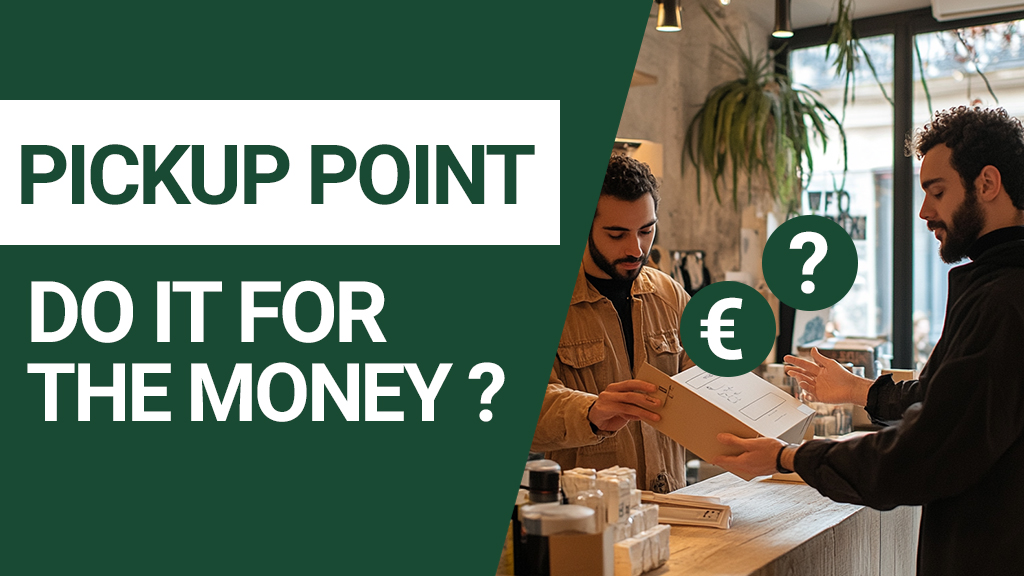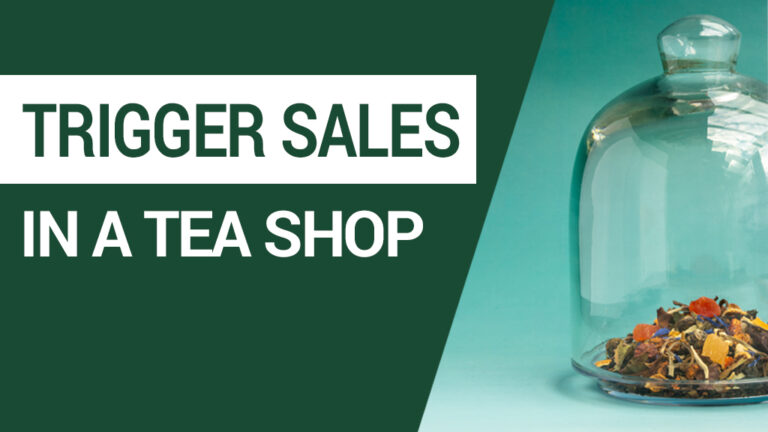I feel I won’t have a consensus here. I too was skeptical about the concept.
But after hearing the feedback of some shops that did the experience, I now consider it’s a great opportunity for tea shop owners… if done right.
Our program today:
- What is a pick-up point?
- Why you should do it
- A few pitfalls to avoid
- What are the different service providers in Europe?
Let’s dive in…
Table of contents
ToggleWhat is a pick-up/drop-off point?
The concept in a nutshell
The pick-up point network is simple.
It’s a parcel delivery service that relies on a network of brick-and-mortar shops to retrieve (pick-up) or send (drop-off) packages. Depending on the provider, there is also the possibility to be delivered at home.
As far as I know, the concept has been created in France in the 80’s – Yes, pre-Internet era! But the surge in online sales and the closing down of post offices in many countries made it grow to what it is now.
Let’s do the math: Stores don’t do it for the money
There is a hard pill to swallow at first…
Being a pick-up/drop-off point is not a lucrative and viable business model.
Every day, you receive 1 to 2 truck deliveries. You will accept and scan parcels one by one. Customers will come to your shop to retrieve their packages and you will serve them, meaning searching for their parcel and scanning it out.
You will also receive customers who want to ship their items. In this case, you’ll collect the parcels that will be picked up by the service provider later that day or the day after.
How much money do you get paid?
For each parcel, you generally get a 30 cts to 50 cts commission for your service. The commission depends on the service provider, the size of the parcel, and the country where you operate.
Let’s do the maths:
From the information I got, on average a shop processes about 40 parcels a day.
Considering a 40 cts commission per parcel, you will make 16€ commission a day…
16€ per day…
Now take into consideration how long it takes to process all these parcels and serve these customers. If you need 1.5 minutes per customer, you will dedicate 1 hour a day to the service.
So, 16€ of commission (not salary) per working hour.
How much money do you make per month?
If we consider you are open 25 days a month, you’ll make a whooping 400€ a month.
Nothing to get excited about…
Why should your store be a pick-up point?
Indeed, why?
Because some people coming to get their package will become customers at some point.
I know a couple of shops that started doing it in France. This is what they experienced:
- You get discovered by the local customer base. Many would have never heard of you otherwise (or much later).
- You engage with them. This is the moment to appear friendly and helpful.
- They are online shoppers, i.e. people with some purchasing power who could fit your ideal customer profile.
Now, the most important:
Very few will buy something from you because they just need to pick up a package. But one day, they will have a need for what you sell. At that moment, some of them will remember your shop and will come to you to get it.
I know it’s unfair to work hard for pennies. But the reality is, it brings traffic to your shop.
This traffic is awareness when you start your business. And you need that attention.
And it’s ok if most of them don’t buy anything from you right away, very few do. But now they discovered you.
If you’re helpful and friendly, it will be a first pleasant experience for them.
And the day they need a gift for Christmas or Mother’s Day, some will remember that you exist, that you are around the corner, and that you will solve their problem, e.g. having a last-minute gift for a family member.
And as usual, those people, if they are happy, they will talk about you. That’s how you create Word-of-Mouth.
That’s it.
It’s not magical and it takes time, but done right, it just pays off in the long run.
Let’s sum it up:
If you recently opened up and need people to be informed of your existence, consider becoming a pick-up/drop-off delivery point.
This is a guaranteed way of getting the necessary awareness from a local shopper base. With time, some will remember your existence and buy from you.
Pitfalls to avoid
Refuse Painful parcels
The first trick is to not accept the painful parcels.
What is that?
It’s the ones from people who wanted a home delivery but didn’t receive it. As they missed the delivery man’s visit, they now have to come to your shop to retrieve their parcel.
Those are the hardest customers, because:
- They are more impatient.
- They don’t understand why they have to come to your shop to get their package: “I wanted home delivery!”
- They complain to you about the lack of good service from the delivery provider.
Why do you get these parcels in your store?
Typically, a shop will receive 2 loads of packages per day:
- One in the morning: it’s for people who decided to retrieve their package in a shop. You can accept it.
- A second one in the afternoon: usually for persons who wanted a home delivery but didn’t get it. These are the painful parcels. Consider refusing them.
Indeed, most contracts allow you to refuse parcels. So it’s up to you to decide when it’s enough.
Know when to stop providing the service
A pick-up point is a great way to start and get some awareness for your shop. Indeed, you need to be seen and known by the local shopper base. This type of service gives you just that.
But there might come a point where you feel you don’t need it anymore. Your goal is to run a successful tea shop, not a post office.
The post office service is just a way for you to grow your shop’s reach.
There is no time limit, and you might decide you want to do it forever. It’s fine.
Just check regularly if the program you’re in still brings new customers and if it’s still worth it.
Different service providers in Europe
- The service allows you to ship and retrieve parcels in brick-and-mortar shops called Point Relais.
- Users can also receive parcels directly at home.
- Another advantage is that it operates in all European countries.
- It’s an alternative to Mondial Relay.
- You can allow retrieving parcels in shops – no home delivery.
- It operates in France only.
Conclusion
You will not earn much with systems like Point Relais. But it’s not why you should do it. You want to be a Point Relais to attract a local customer base so they know you’re in business.
It’s the opportunity for them to come to your shop, get in contact with you, your personnel, and your products.
Most people won’t buy anything on their first visit. But some of them, at some point, will remember your store when they need precisely what you’re selling. And they’ll come to you to get it.
If you can, avoid the painful parcels and evaluate how long you need to provide this service. Once you are well-known in your area, it could be time for you to stop.
Do you agree with this one? Let me know your opinion by sending me a quick feedback.




